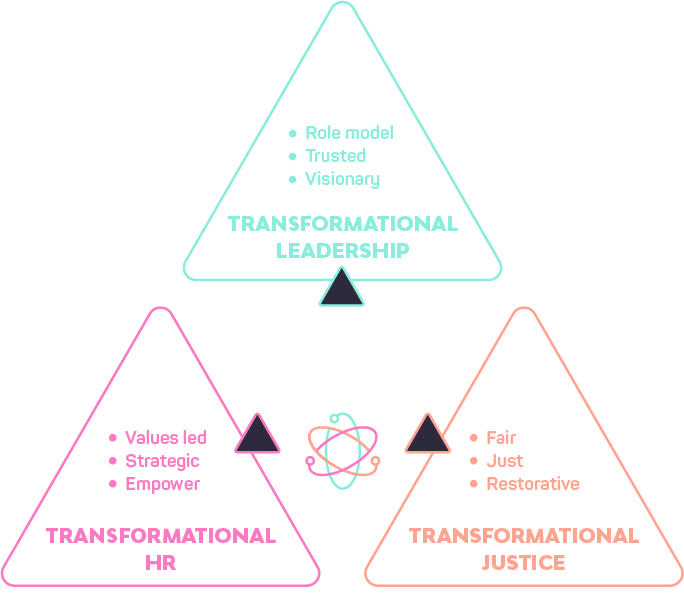
The Transformational Culture Model™
The Transformational Culture Model™ comprises 3 distinct elements:
- The Transformational Culture Hub.
- The 8 enablers of a transformational culture.
- The 7Cs of transformation.
The Culture Flow System™

The Culture Flow System™ expresses the relationship between corporate culture and local climates and subcultures.

The Transformational Triangle™
The Transformational Triangle™ contains three elements of
- Transformational Leadership
- People and culture
- Transformative Justice
combining to create a Transformational Culture. Each corner of the transformational triangle is vital to creating a fair, just, inclusive, sustainable and high-performing organization.
The Employee Experience Equation™

The Right Toolkit for Your Organization
We have a resource library of toolkits that work for every business.
Get in touch today and tell us about your business, the aims and goals and we’ll recommend the right solution for you.

